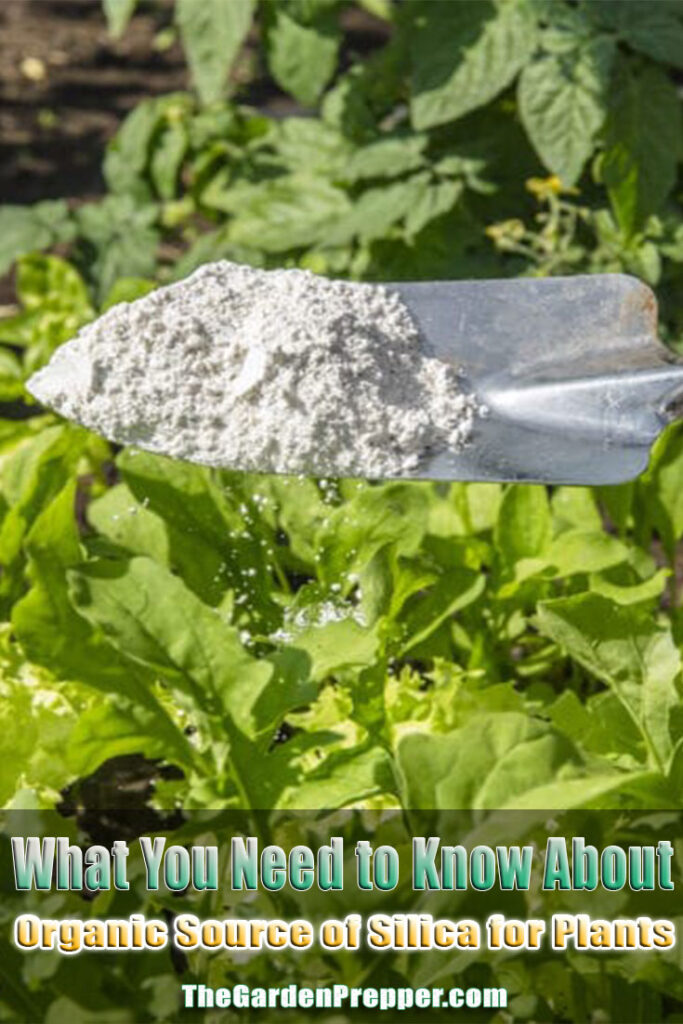You may have already grown familiar with nitrogen, phosphorous, and potassium, all of which are required to maintain good plant health. That’s why there are fertilizers that contain the NPK! However, there is one beneficial element that not everyone is familiar with in the gardening world: Silicon.
Silicon is found everywhere but isn’t around much in garden soils. If it is present, it’s only in an inert form, so plants are unable to use it.

The Benefits of Silica for Plants
As some of you may know, silica is a very useful element to us humans. It is used to make many different materials and equipment vital for us, just as it is a vital element for plants. It is found in the Earth’s crust, which is why plants would accumulate it in large concentrations, at similar amounts to macronutrients.
However, even if it has benefited agriculture a lot, silica isn’t considered a necessary plant element. Plants would assimilate silica through its roots as silicic acid, traveling to the active growing points to complex with organic compounds in its cell walls. As a result, the cell walls become stronger.
But why is silica beneficial for plants and how exactly does it help? This is because this element provides the following benefits:
1. Strengthen Plant Cell Walls
Silica helps provide plants with stronger cell walls, making it possible for them to grow strong stems and branches that support fruit production once it matures. This is helpful in receiving a bountiful harvest once grown and during their harvesting season!
2. Improve Plant Immune System
Plants don’t have an immune system to help them resist the effects of environmental factors that affect plant growth. With silica in plants, it withstands the negative effects of the climate and drought all throughout their lifespan.
3. Help With Metabolic Functions in Plants
Soluble silica will provide plants with more chlorophyll concentration as needed. This would help reduce the risk of leaves wilting while improving their growth and production. As a result, you’ll notice an improvement in foliage health thanks to silica.
4. Increases Resistance to Pathogens and Pests
When feeding plants with soluble silica, it fortifies areas around their cell walls, so it’s hard for diseases to enter the plant. Also, bugs will find it tougher to bite and suck the plant, which reduces plant damage.
Buying an Organic Source of Silica for Plants

Now that you know more about the benefits of silica for plants, you’re probably wondering where you can get an organic source of silica for plants. You can actually find a lot of silica products for sale labeled as organic and good for plants, though you need to dig a bit deeper and do your research to make sure you’re investing in the right one.
Besides store-bought organic silica for plants, there are others that you may invest in. Quality silicon sources should have high levels of soluble silica and with physical properties deemed safe for machine applications. The best ones should be very soluble, and since most sources are insoluble, it does take time and research before finding a great source.
Here are good sources of silica for your plants:
- Slag is a by-product from iron and alloy industrial processing, having high concentration and solubility. Usually, it is a combination of metal oxides and silicon dioxide.
- Calcium Silicates are one of the most important sources of silicon for plants, doing well in terms of soil application.
- Sodium Silicate is another great source of silica for plants, also known as water glass.
- Thermo-Phosphate Fertilizers are commonly used in Brazil. However, they are quite difficult to find and expensive. That said, they are extremely effective and help increase plant yield in areas where there is little silica content in their soil.
Applying Organic Source of Silica for Plants
If you have silica and plan to use it in your garden, follow these tips:
- When using powdered silicon, mix ½ to 1 cup of it for every 8 gallons of potting soil. You may also sprinkle 1 cup for every 4-row feet in the garden bed, mixing it into its root zone. Another method is to top-dress the soil with powdered silicon, placing 1-2 tablespoons for each plant every 1-2 weeks.
- Silica helps reduce transplant shock. To take advantage of this benefit, fust 1 teaspoon to a quarter cup of silicon on the sides and bottom of root balls as you transplant them.
- When using liquid silica, use 0.8-1.6 teaspoons for every gallon of water and put it in your hydroponics system. You might have to adjust the TDS and pH levels as you use this silica.
Be sure to wear a dust mask as you handle powdered silicon because breathing it in would irritate the lungs, causing potential health issues.
Read more: Does Potting Soil Go Bad? The Answers Here
Wrapping It Up
While it isn’t a major plant nutrient, silica is pretty important in grow rooms, providing many health benefits for your plant to grow. In fact, there are plants that can gather higher levels of silica from their tissue! If you plan on using silica in your plants, then you can find organic sources to keep your plants thriving.
Hope this article helped you out! Do try incorporating silica into your plant’s care routine and see how well it grows with it. Good luck!
